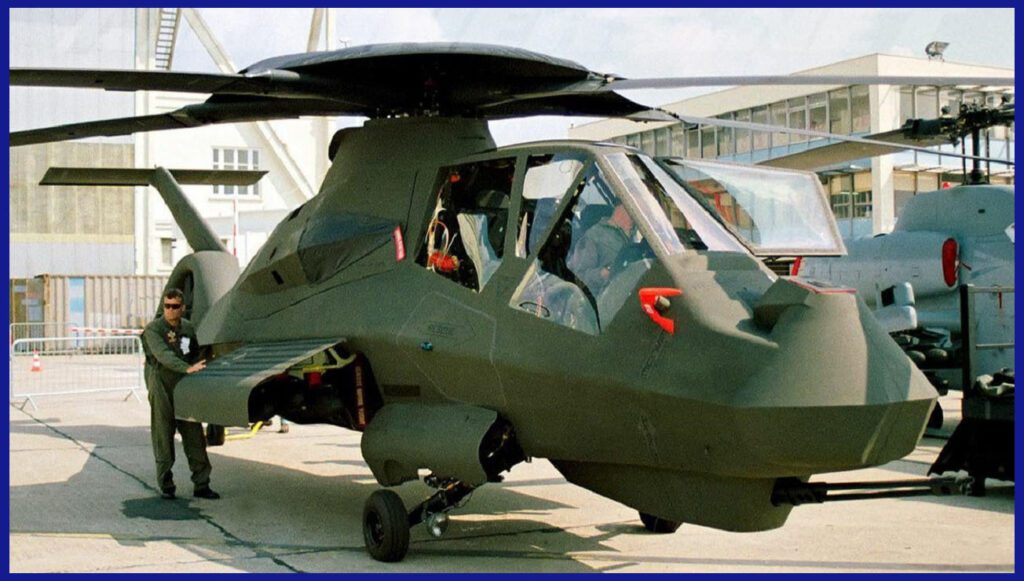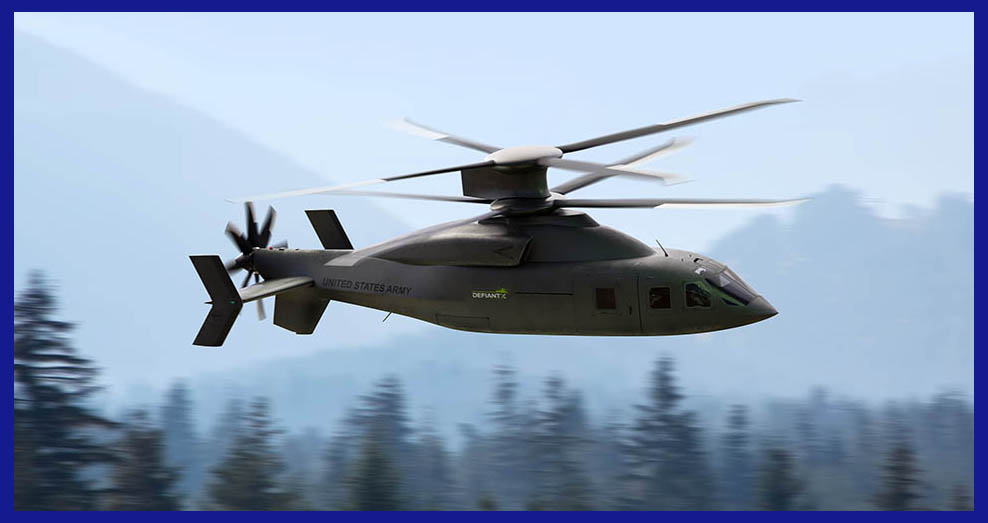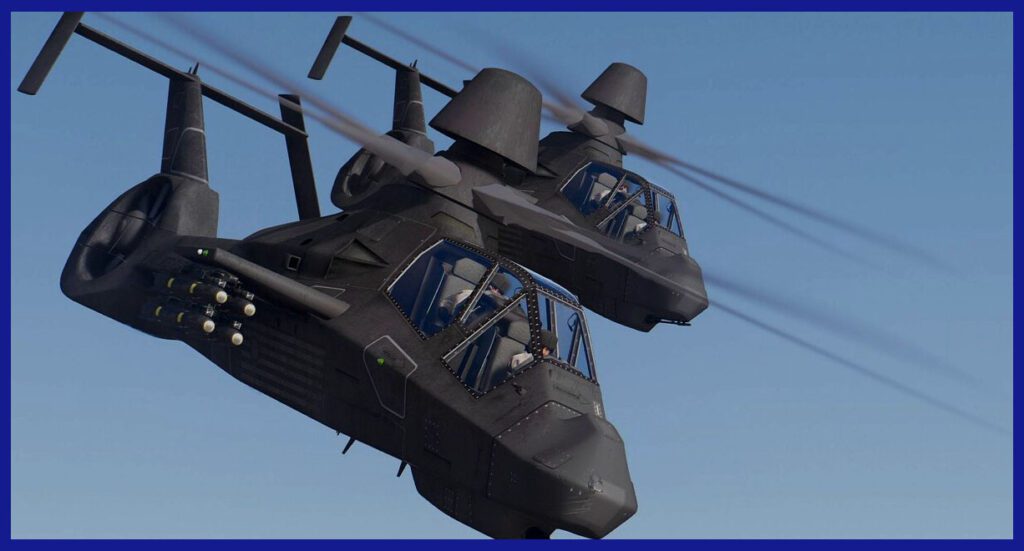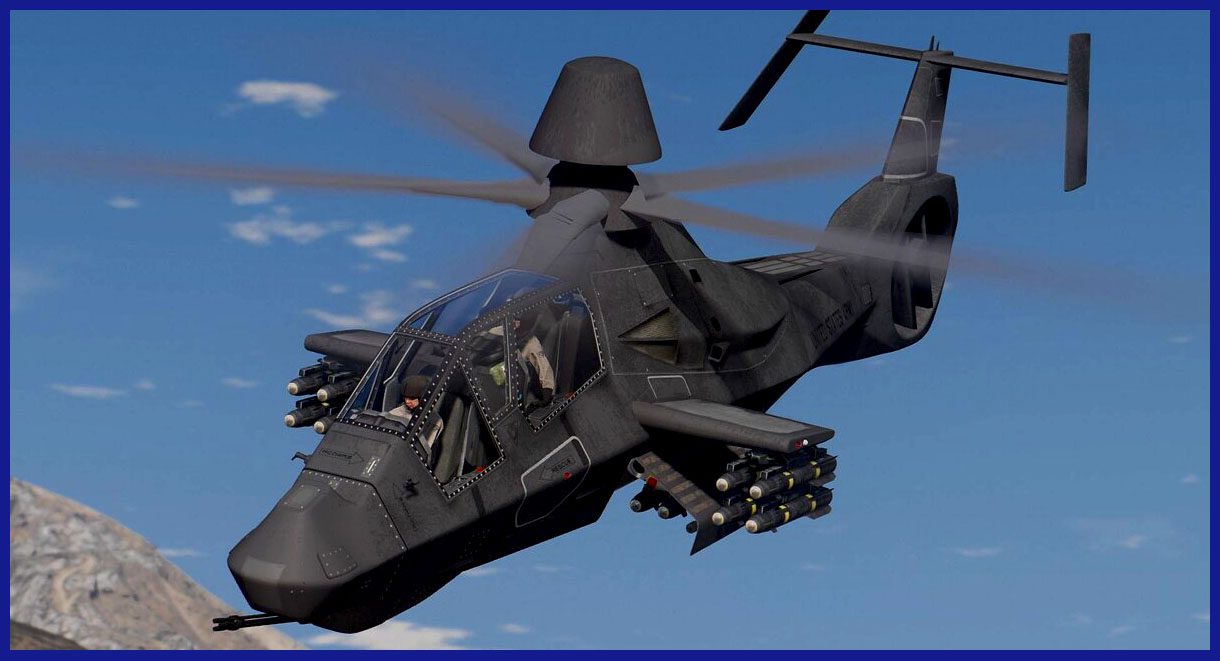Stealth Helicopter!! Was the Boeing Sikorsky RAH-66 Comanche the finest in the class of attack helicopters, despite its billion-dollar loss
The armed reconnaissance and attack Stealth Helicopter of Boeing-Sikorsky RAH-66 Comanche was created in 1996 for the US Army. After years of development, the RAH-66 programme was abandoned in 2004 before mass manufacturing could start, despite having already cost close to US$7 billion.
The Design History of Boeing joined with Sikorsky to develop the RAH-66 Comanche two-seat armed reconnaissance stealth helicopter to replace the US Army’s OH-58s and some AH-64s. The project was initiated in late 1990 and two prototypes and five EMD helicopters were supposed to be built. The YRAH-66 was first flown on 4th Jan 1996 but funding delays have slowed the programme.
An advanced armed reconnaissance and assault helicopter was what the Comanche was designed to be. The OH-58D Kiowa Warrior, an enhanced variant of a Vietnam War-era observation helicopter, was replaced by the Comanche, which was built particularly for the function of an armed scout. Compared to the AH-64 Apache assault helicopter it was meant to accompany, it was both lighter and smaller.

The aircraft is ” stealthy “, largely built from composites and has fly-by-wire control systems. The twin LHTEC turbo-shafts are buried in the centre fuselage and are heavily shrouded for IR protection. In order to reduce its radar-cross-section (RCS) along with other areas of visibility and detectability.
The exterior surfaces of the RAH-66 were faceted and covered with both radar-absorbent material (RAM) coatings and infrared-suppressant paint; as a result of these combined measures, the Comanche’s RCS was stated to be 360 times smaller than that of the AH-64 Apache. The acoustic signature of the helicopter was also reported to be noticeably lower than comparative helicopters; this reduction had been partially achieved through the adoption of an all-composite five-blade main rotor and pioneering canted tail rotor assembly.
As intended, The Comanche was to be equipped with sophisticated avionics, including navigation and detection systems, which would have enabled operations at night and in inclement weather. Its primary mission was scouting using its advanced sensors, in particular locating and designating targets for attack helicopters, such as the AH-64 Apache, to strike. The Comanche was furnished with a digital fly-by-wire flight control system. Each of the two crew members was to be provided with a pair of multi-functional LCDs in addition to the Helmet-Integrated Display and Sight System (HIDSS)
For the light attack role, the RAH-66 was to be furnished with various armaments. It was equipped with a single chin-mounted 20 mm three-barrel XM301 rotary cannon, which could be pointed rearwards and retracted under a fairing when not in use to decrease the helicopter’s radar cross-section. In addition, the RAH-66 was capable of internally carrying a maximum of six AGM-114 Hellfire air-to-ground missiles or up to twelve AIM-92 Stinger air-to-air missiles, which would be evenly divided between a pair of retractable weapons pylons. Beyond storing munitions internally, the Comanche could also mount external stub wings to carry up to eight Hellfire missiles or sixteen Stinger missiles.
Reason For Cancellation: On 23 February 2004, the U.S. Army announced that they had decided to terminate all work on the Comanche program. At the time, it was stated that the Army had determined that a number of upgrades would be necessary in order for the RAH-66 to be capable of surviving on the battlefield in the face of current anti-aircraft threats; however, the Army had instead decided to re-direct the bulk of its funding for rotary development toward the renovation of its existing helicopter fleet of attack, utility, and reconnaissance aircraft.
Specifically, the Army also had plans to reuse the funds allocated to the Comanche program to speed up the development of unmanned aerial vehicles (UAVs), which could also perform the scouting role intended for the vehicle. At the time of its termination, the Comanche program had reportedly spent US$6.9 billion. The contract termination fees involved were estimated to total US$450–680 million for the main program partners Sikorsky and Boeing.

RAH-66 Comanche Specifications:
Country Of Origin_ USA
- Length: 46 ft 10 in
- Width: 6 ft 8.25 in
- Height: 11 ft 7 in
- Max takeoff weight: 17,408 lb (7,896 kg)
- Power plant: 2 x LHTEC T800-LHT-801 Turbo Shaft engines
- Main rotor diameter: 40 ft 0 in (12.19 m)
- Main rotor area: 443 sq ft (41.2 m2) 5-bladed main rotor with fenestron tail rotor
- Max Speed: 324 km/h
- Cruise speed: 306 km/h
- Combat range: 280 km ( with an endurance of 2 hours 30 minutes on internal fuel )
- g limits: +3.5/ -1
- Rate of climb: 4.55 meters per second
- Armament: 1× Turreted Gun System with a 20 mm XM301 three-barrel rotary cannon (capacity: 500 rounds)
Internal bays: 6× AGM-114 Hellfire air-to-ground missiles, or 12× AIM-92 Stinger air-to-air missiles, or 24× 2.75 in (70 mm) Hydra 70 air-to-ground rockets
Optional stub wings: 8× Hellfires, 16× Stingers, or 56× Hydra 70 rockets

“Moreover, seize the opportunity to own an exquisite scale model of the RAH-66 Comanche, now conveniently available on Air Models. Simply click the provided links to access this remarkable helicopter. Renowned for its superlative stealth characteristics, don’t miss out on this extraordinary offering.”
In conclusion, the Comanche helicopter, also known as the RAH-66 Comanche, was an advanced stealth reconnaissance and attack helicopter program developed by the United States Army. However, despite its promising features and capabilities, the program was cancelled in 2004 before reaching full-scale production.
The Comanche was designed to be a next-generation rotorcraft with reduced radar, infrared, and acoustic signatures, making it stealthier than its predecessors. Its primary role was to provide reconnaissance and surveillance capabilities while also being capable of engaging and destroying targets. The helicopter featured advanced avionics, sensor systems, and a mast-mounted sight for long-range target acquisition.
Nevertheless, the program faced technical difficulties and escalating costs, leading to its termination. Budget constraints and concerns about cost-effectiveness were the primary reasons behind the cancellation. As a result, the Comanche helicopter never entered active service, and the U.S. Army continued to rely on upgraded versions of existing helicopters, such as the AH-64E Apache Guardian, to fulfil their reconnaissance and attack helicopter requirements.
Vital Proclamation For Our Esteemed Readers!
“Day and night, we are on a mission to bring you the best articles and latest updates from around the world. Our dedicated team works tirelessly to provide you with a seamless reading experience on this platform. However, delivering quality content and maintaining our platform’s operations come at a cost. We rely on the support of readers like you to sustain our efforts and continue writing for you. By purchasing high-quality foreign-made affiliate products through our links, you not only help us keep our platform alive but also receive top-quality products. Your support means everything to us and inspires us to keep pushing harder.
Furthermore, if you have any suggestions or requests for additional information, we are more than happy to hear from you. We value our readers’ feedback and input, and we thee are always looking for ways to improve our website and enhance the user experience.
If you are seeking information on a particular defence material or equipment that is not currently covered on our site, please let us know in the comment box. We will do our best to research the topic and provide you with the information you need. Thank you for your interest in our website, and we eagerly anticipate hearing from you! Happy reading!”
